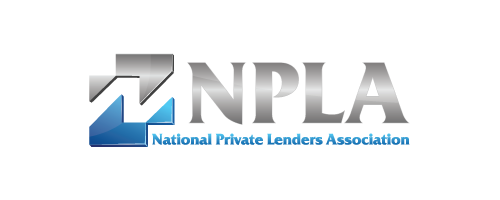Home Mortgage Disclosure Act (HMDA) Compliance

Dust off Your HMDA Compliance
On September 23rd, 2022, the U.S. District Court for the District of Columbia partially invalidated the Consumer Financial Protection Bureau (“CFPB”)’s 2020 amendment to the Home Mortgage Disclosure Act (“HMDA”) rules which raised the threshold for financial institutions (including private mortgage lenders and brokers) originating closed-end residential loans from 25 non-excluded loans in the past two calendar years to 100 non-excluded loans in the past two calendar years. In response, the CFPB released a technical amendment of the HMDA rules to vacate the 2020 amendment which raised the HMDA threshold to 100 closed-end loans, so that the threshold is effectively lowered back to 25 loans.
Financial institutions that have been exempt from HMDA for the past year and a half will have to dust off their HMDA compliance programs and start tracking and reporting non-excluded residential loans to the CFPB annually.
What is HMDA
HMDA is the law the requires financial institutions who have a home or branch office in a metropolitan statistical area and who meet certain origination thresholds for loans secured by dwellings, to track and report numerous data points to the CFPB every March 1st. In 2020, the CFPB raised the thresholds. For closed-end loans, the threshold went from 25 nonexcluded loan in the preceding two calendar years, to 100 non-excluded loan in the preceding two calendar years. For open-end loans, the threshold went from 100 non-excluded loan in the preceding two calendar years, to 200 non-excluded loan in the preceding two calendar years. Not all business purpose loans are exempt. Lender or brokers that originated fewer than 100 closed end loans, and fewer than 200 open- end loans secured by residential property were not covered under HMDA, and did not have to track and report data to the CFPB.
What Did the Court Case Change?
The U.S. District court invalidated the 2020 amendment to the regulation which raised the threshold for closed-end loans. It left the threshold for open-end loans intact. If the holding stands, it will lower the threshold for closed-end loans back to 25 loans secured by residential structure in the previous two calendar years.
What Was the Case About?
The case, National Community Reinvestment Coalition v. CFPB, was filed by some consumer advocacy groups along with the City of Toledo, Ohio to challenge the CFPB’s 2020 amendment that raised the HMDA loan thresholds. The plaintiffs claimed that by raising the threshold and therefore excluding what they characterized as a large number of lenders from the HMDA data, it thwarted their efforts to police the lending industry for fair lending violations, especially on a local and institutional level. They challenged the 2020 rule on the grounds that it was arbitrary and capricious, contrary to law, and contrary to the Bureau’s authority under the Administrative Procedures Act. The court basically agreed with the plaintiffs that the rule increasing the threshold for closed-end loans was arbitrary and capricious, stating, “CFPB’s compliance with the statutory directions in conducting the requisite analysis of the “benefits” of increasing the closed-end loan volume reporting threshold and the concomitant “costs” falls so short as to render this aspect of the 2020 Rule arbitrary and capricious.” The court didn’t find the same issues with the open-end loan threshold and left the 200 open-end loan threshold in place.
The CFPB’s Response
The CFPB posted a blog post in December 2022 indicating that the court case meant that the HMDA loan thresholds were now lowered back to the 25 closed-end loans. The CFPB also released a technical amendment of the HMDA rules to vacate the 2020 amendment which raised the HMDA threshold to 100 closed-end loans, so that the threshold is effectively lowered back to 25 loans to align the HMDA regulations with the case holding. The technical amendment states that financial institutions that met the 25 closed-end loan threshold but not the 100 closed-end loan threshold in 2020 & 2021, can, but are not required, to submit a HMDA report in 2023 for their 2022 loans. But financial institutions that met the 25 loan threshold in 2021 and 2022 will have to collect HMDA data for 2023 and report to the CFPB by March 1, 2024.
What Does it Mean for Lenders?
For lenders and originating brokers, they may once again fall within the 25 loan threshold of a “financial institution” under HMDA, and will need to start tracking and reporting over 40 data points each year for:
1. Applications for covered loans it receives during the year;
2. Covered loans that it originates during the year; and
3. Covered loans that it purchases during the year.
Covered loans are loans secured by a dwelling. A dwelling is a residential structure whether or not attached to real property, including condos, manufactured homes, and multifamily residential structures, with some exceptions. Here are some of the more common exceptions:5
-
- Land loans
- Ag loans
- Temporary loans
- The purchase of a partial interest in a loan
- The purchase of a pool of loans
- The purchase solely of servicing rights in a loan
- Business purpose loans made for a purpose other than home improvement, home purchase, or refinance.
What Can You Do?
Financial institutions should review their originations for 2021 and 2022, to determine if they exceed the 25 residential closed-end loan threshold in those two years, and are ready to collect and report HMDA data in March, 2024. Institutions who let their legal entity identifier (LEI) number lapse with the GMEI utility or other similar service should renew it in anticipation of reporting in March 2024.
If you need help figuring out if you will be covered under HMDA, or need help with HMDA compliance please reach out to Michelle R. Rodriguez, Esq., Wright, Finlay & Zak LLP.
Endnotes
- Nat’l Cmty. Reinvestment Coal. v. Consumer Prot. Bureau, 2022 U.S. Dist. LEXIS 174183, 2022 WL 4447293 (D.D.C. September 23, 2022)
- 12 CFR 5
- 12 CFR 2(g)
- 12 CFR 2(g)(2)
- 12 CFR 3(c)
Authored By:
Michelle R. Rodriguez, Esq., Wright, Finlay & Zak LLP.
